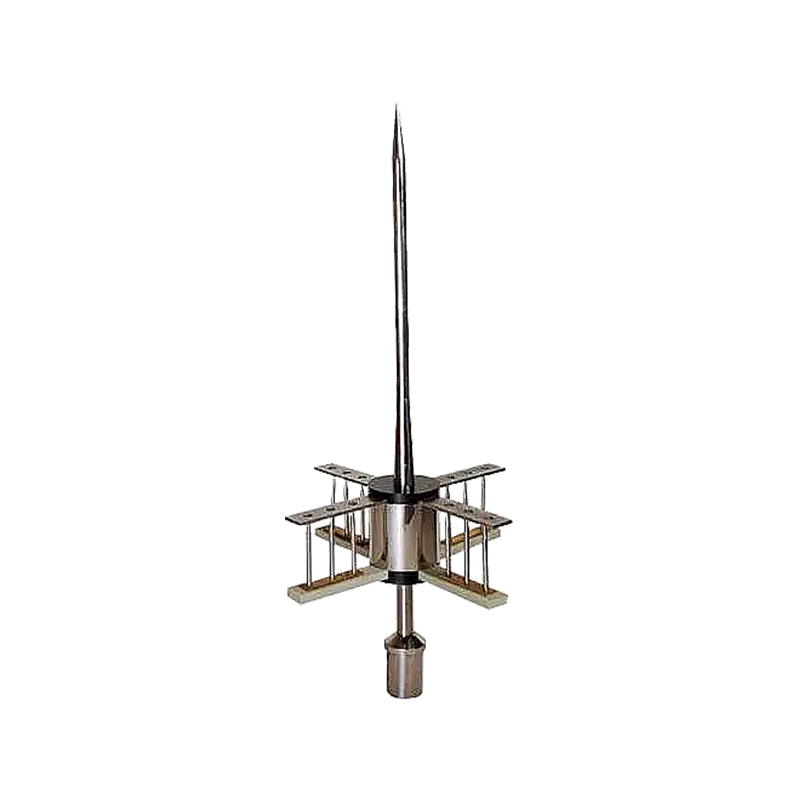Lightning strikes pose a significant threat to residential buildings, especially in regions prone to thunderstorms and lightning activity. In such areas, lightning rods, also known as air terminals or Franklin rods, play a crucial role in protecting homes from the potential devastation caused by lightning strikes.
Importance of Lightning Protection for Residential Buildings:
Fire Prevention: One of the most critical aspects of lightning protection is preventing fires caused by lightning strikes. When lightning hits a structure, it can ignite flammable materials, such as wood, insulation, and roofing materials. Lightning rods provide a safe path for the electrical discharge, diverting it away from vulnerable parts of the building and reducing the risk of fire.
Structural Protection: Lightning strikes can cause structural damage to buildings. The immense heat generated during a strike can lead to the fracturing of bricks, concrete, and masonry, compromising the integrity of the structure. Lightning rods help prevent direct strikes to the building and reduce the likelihood of severe damage.
Electrical Equipment Safety: A lightning strike near a residential building can induce electrical surges in power lines and communication cables, damaging electrical appliances, computers, and other electronic devices. Lightning protection systems, which include surge protection devices, safeguard electrical equipment from the harmful effects of voltage surges.
Safety of Occupants: Lightning strikes can cause serious injuries or fatalities to individuals within a building. A properly installed lightning protection system reduces the risk of injury to occupants by offering a safe pathway for the electrical discharge to reach the ground without passing through the building's interior.
Components of Lightning Protection for Residential Buildings:
Lightning Rod (Air Terminal): The lightning rod is the primary component of the system. It is typically mounted on the roof's highest point, and its purpose is to attract and capture lightning strikes. The rod is made of a conductive material, such as copper or aluminum, and is pointed to facilitate the efficient ionization of the surrounding air, making it more likely to attract a lightning strike.
Downleads and Conductors: Once the lightning rod captures a lightning strike, downleads (conductive cables) carry the electrical current down from the roof to the grounding system. Downleads are carefully routed along the building's exterior to minimize any potential risk to the structure.
Grounding System: The grounding system is a critical part of the lightning protection system. It consists of metal rods or plates buried deep in the ground around the building. When lightning strikes the lightning rod, the electrical energy is conducted through the downleads to the grounding system. The grounding system effectively dissipates the energy into the earth, preventing any damage to the structure or electrical systems.
Surge Protection Devices (SPDs): Surge protection devices are installed at electrical panels and sensitive equipment junctions to protect electrical appliances and electronic devices from voltage surges caused by lightning strikes. SPDs divert excess voltage safely to the grounding system, preventing damage to valuable household electronics.
Installation and Maintenance:
The installation of a lightning protection system for a residential building should be carried out by a qualified and experienced professional in compliance with local building codes and safety standards. Regular maintenance checks are essential to ensure the system's effectiveness and identify any potential issues that may arise over time.
 ESE Lightning RodEarly Steamer Emission Lightning Rods Are The Preferred Protection Method For Mega-Structures Such As Distribution Warehouses, Industrial Plants, Amusement Parks, Shopping Malls, Sports Arenas, Golf Courses, And Other Large Area Structures.
ESE Lightning RodEarly Steamer Emission Lightning Rods Are The Preferred Protection Method For Mega-Structures Such As Distribution Warehouses, Industrial Plants, Amusement Parks, Shopping Malls, Sports Arenas, Golf Courses, And Other Large Area Structures.


 English
English 简体中文
简体中文











